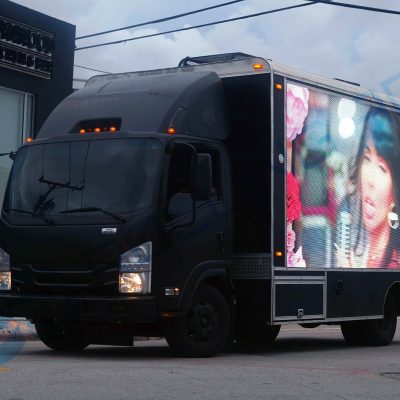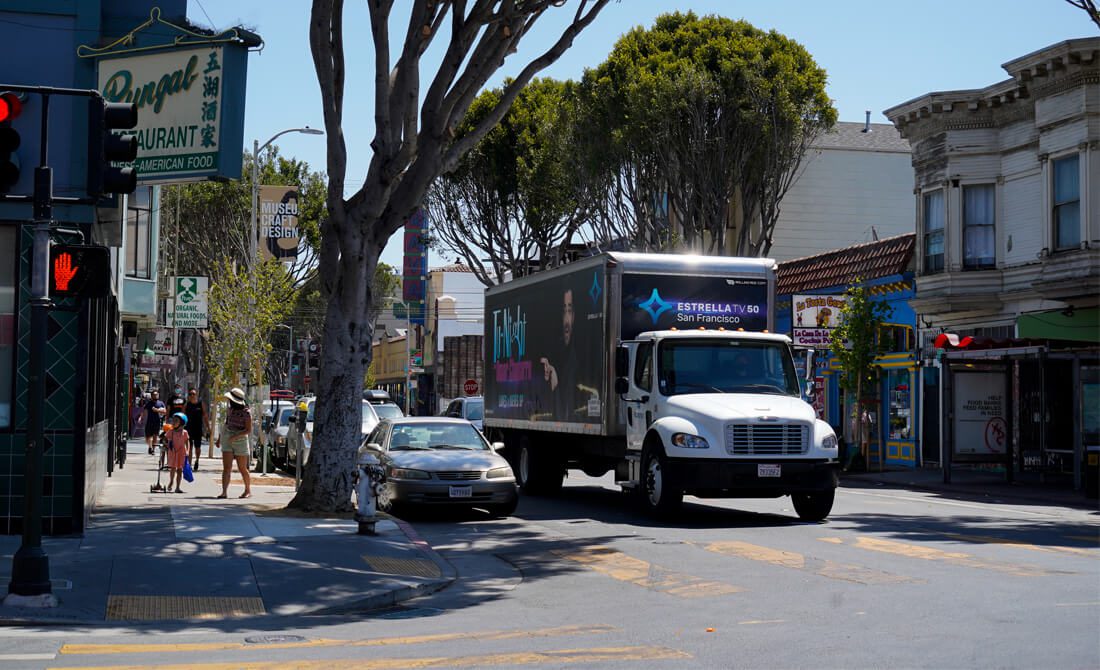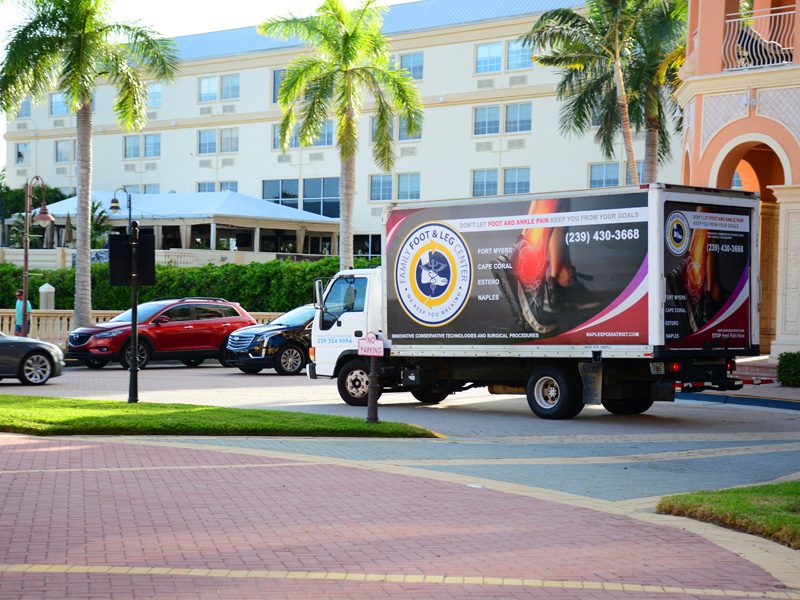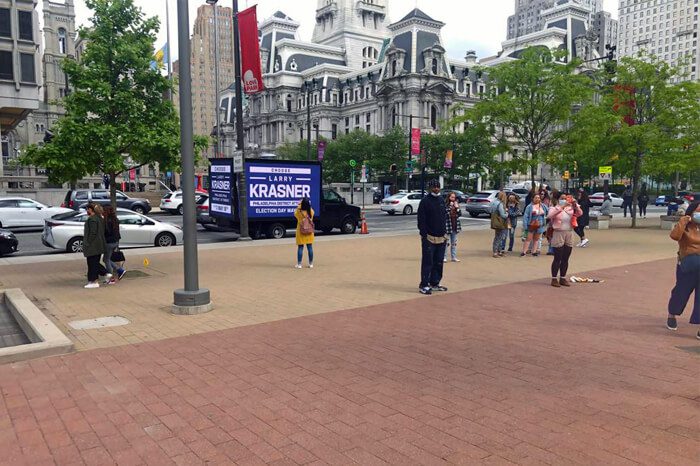How Hydroxie Used LED Truck Advertising to Build Massive Brand Awareness Across the U.S.
How Hydroxie Used LED Truck Advertising to Build Massive Brand Awareness Across…
Billboard advertising remains a powerful tool in the marketing arsenal, capturing the attention of millions of passersby daily.
However, measuring its success can be challenging. To ensure your billboard ad is effective, it's essential to track specific metrics that provide insights into its performance.
Here are five key metrics to measure the success of your billboard ad campaign.

Reach refers to the total number of unique individuals who have seen your billboard ad. This metric is crucial because it indicates the potential audience size your message is exposed to.
Understanding the reach of your billboard helps you gauge the extent of your campaign's visibility. A higher reach means your ad is being seen by more people, which can lead to greater brand awareness and potential customer acquisition.
Utilize data from local transportation departments to estimate the number of vehicles passing by your billboard.
In areas with heavy foot traffic, conduct surveys or use automated counters to estimate the number of pedestrians who see your ad.
Partner with data analytics firms that use GPS and mobile data to provide estimates of unique views.
For a billboard located on a busy highway, combining traffic data with GPS-based analytics can give a comprehensive picture of how many people see your ad daily, weekly, or monthly.

Frequency measures how often an individual is exposed to your billboard ad over a specific period. It's a critical metric for understanding the repetition rate of your message.
High frequency can reinforce brand recognition and message retention, increasing the likelihood of your audience taking action. However, too high a frequency might lead to ad fatigue, while too low may result in insufficient exposure.
Analyze traffic flow and patterns to estimate how often the same individuals pass by your billboard.
Conduct surveys to understand how often commuters or pedestrians notice the ad.
Use mobile data to track the movements of people in the area over time.
For a billboard in a metropolitan area with consistent daily commuters, frequency can be estimated by analyzing the daily routes of these individuals using geolocation data.

Impressions refer to the total number of times your billboard ad is seen, accounting for both unique and repeat views. It's a broader measure than reach, providing a sense of the overall exposure of your campaign.
Impressions help you understand the overall visibility of your ad, including the cumulative effect of repeated exposures. This metric is essential for evaluating the potential impact and visibility of your campaign.
Multiply the average daily traffic count by the number of days your ad is displayed.
Consider factors such as the size and visibility of the billboard to adjust impression estimates.
Use services from companies specializing in out-of-home advertising analytics to get accurate impression counts.
If a billboard on a busy interstate receives 100,000 vehicles passing by daily, with each vehicle containing an average of 1.5 occupants, over a month, the billboard would generate approximately 4.5 million impressions.

Engagement measures the extent to which your audience interacts with your billboard ad. This can include various actions, such as taking a photo of the ad, visiting a website, or using a promotional code.
Engagement metrics provide insight into how compelling and persuasive your ad is. High engagement indicates that the ad not only catches attention but also prompts action, making it a valuable measure of effectiveness.
Track mentions, shares, and photos of your billboard on social media platforms.
Monitor spikes in website visits that correlate with the location and duration of your billboard campaign.
Use specific promo codes or URLs on the billboard to track direct responses.
A billboard promoting a new app can include a unique QR code. Tracking the number of scans provides a direct measure of engagement and effectiveness.

Conversion rate measures the percentage of people who take a desired action after seeing your billboard ad. This could include making a purchase, signing up for a service, or any other predefined goal.
Conversion rate is a direct indicator of the billboard's ROI (Return on Investment). It shows how well the ad drives desired actions, making it crucial for evaluating the financial success of the campaign.
Use URLs or landing pages specific to the billboard ad to track conversions.
Implement promo codes exclusive to the billboard campaign to measure direct sales.
Ask new customers how they heard about your product or service to attribute conversions to the billboard.
A retail store might offer a discount code displayed on the billboard. Tracking the number of purchases using this code provides a clear measure of conversion.

By tracking reach, frequency, impressions, engagement, and conversion rates, you can gain a comprehensive understanding of your campaign's performance. These insights will not only help you evaluate the current campaign but also inform future advertising strategies to maximize impact and ROI.
Effective measurement allows you to refine your approach, ensuring that your billboard advertising efforts yield tangible and meaningful results.
Speak to a mobile billboard advertising specialist for all your OOH media solutions.
How Hydroxie Used LED Truck Advertising to Build Massive Brand Awareness Across…
Which Is Better for Local Businesses? Mobile Billboards vs. Digital Ads Local…
How To Choose the Perfect Route for Your Mobile Billboard Campaign Selecting…
Top 5 Locations in California Where Mobile Billboards Have the Highest Impact…
A Comprehensive Guide How Much Do Mobile Billboards Cost? Mobile billboards are…
Powerful tool for your brand message. What to Look for in a…
Get Exclusive Deals & Our 1x Monthly OOH Newsletter🔥